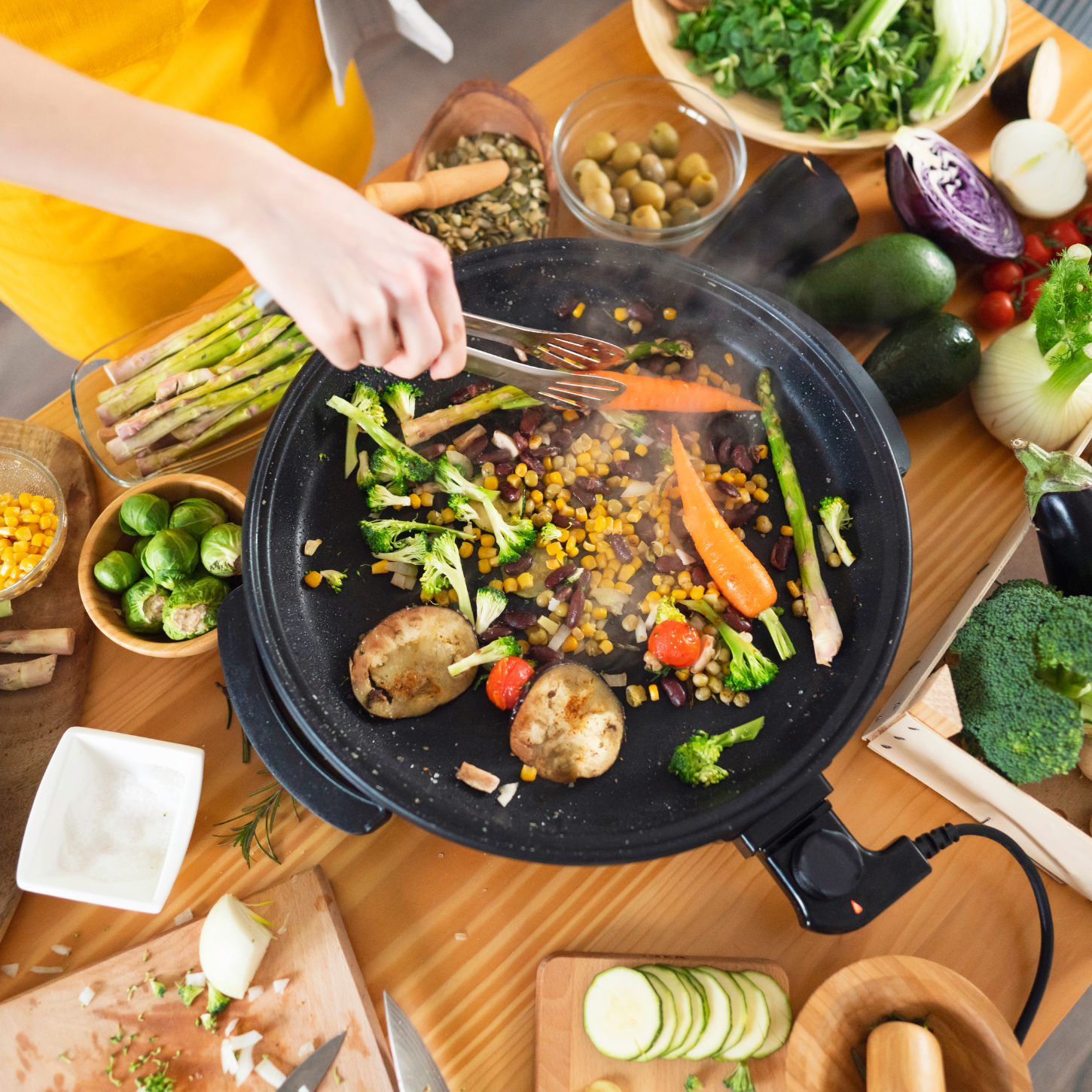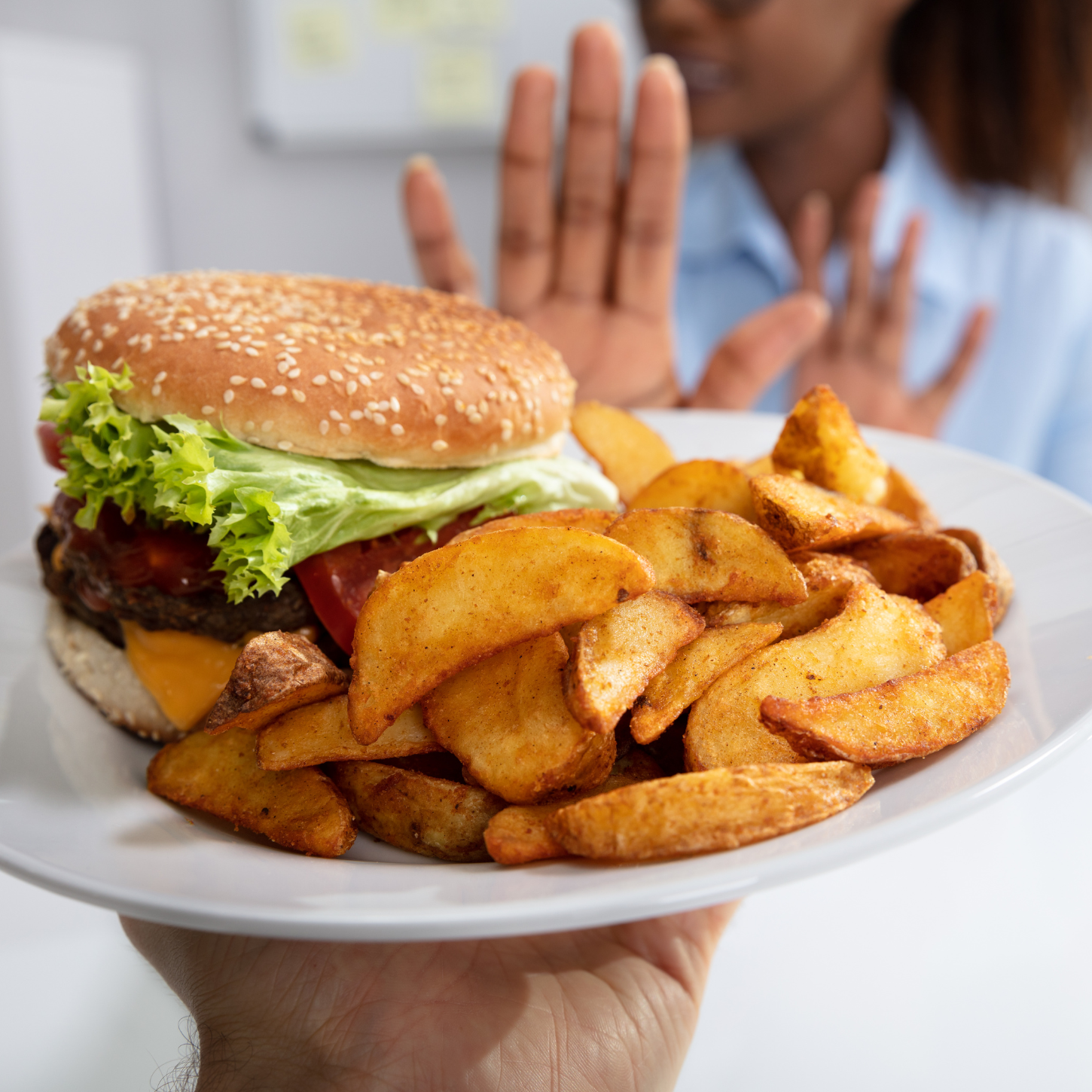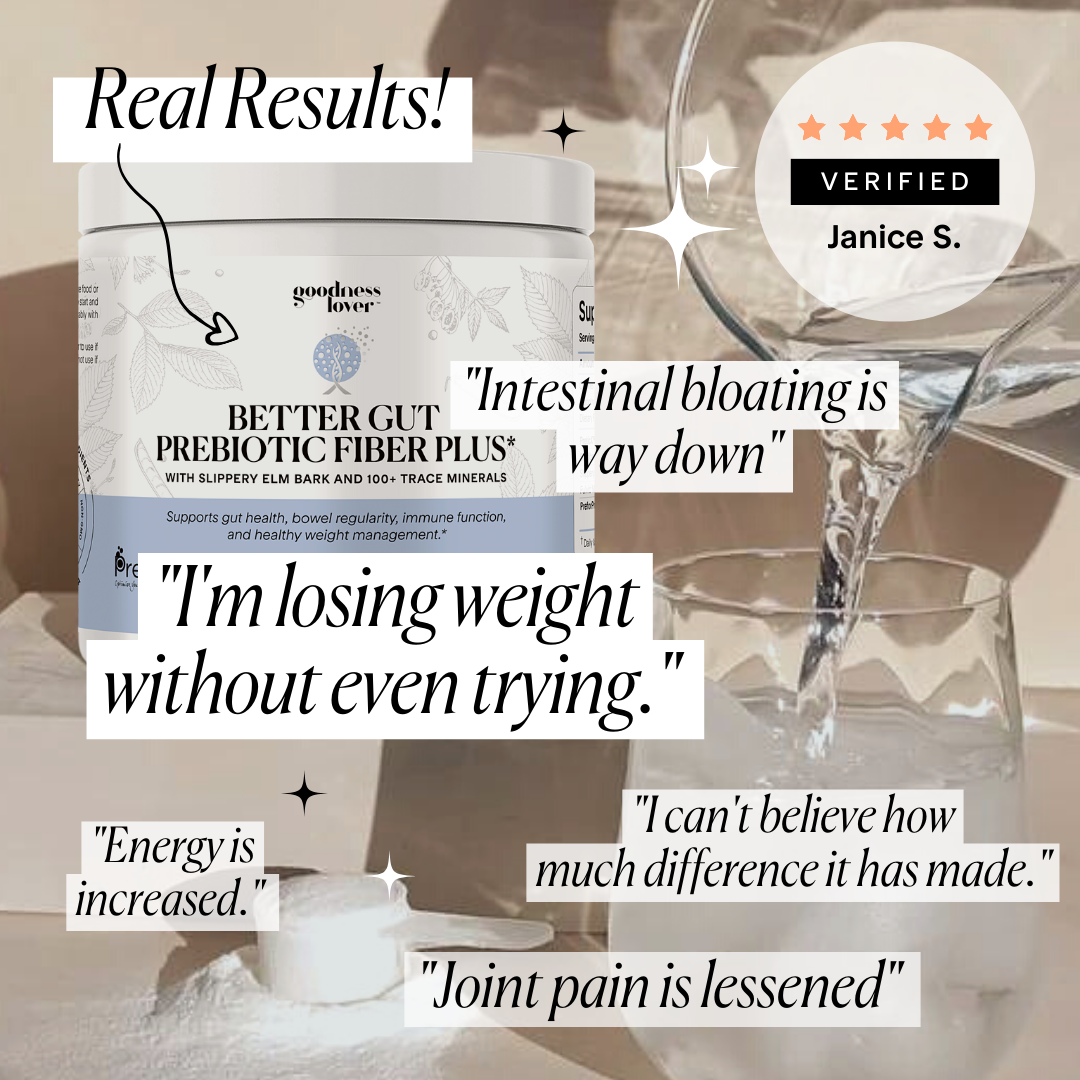Are you tired of the stress or feeling overwhelmed by the thought of planning out your plant-based meals every week? Whether you're a plant-based veteran or just dipping your toes into the world of plant-based eating, it can be a challenge to come up with tasty and nutritious meal ideas every day.
But with a little bit of preparation and the right mindset, you'll be cooking up a storm in no time.
When you hear "meal planning," do you picture someone hunched over a kitchen counter on a Sunday, ticking off 4-5 complicated recipes for the week? Or maybe you imagine a fridge stacked with identical Tupperware containers full of pre-made meals?
Well, I'm here to tell you that meal planning doesn't have to be so tedious and repetitive. When done right, it can save you time, energy, and even money. Plus, it'll cut down on the mental strain of constantly deciding what to eat, aka decision fatigue.
Let's explore how to make meal planning (whether plant-based or not) a breeze and how to keep things exciting and achievable in your busy schedule.
Table of Contents:
The Benefits of Meal Planning
Whether you’re cooking for many or just yourself, planning your meals doesn't have to be complicated.
Yes, it does require an initial investment of your time, but the return you get in terms of saving time during the rest of the week is priceless. With just a couple of hours of planning and preparation, you can easily and efficiently prep your plant-based meals for the entire week, saving you tons of time and effort.
Preparing food in advance means less time spent in the kitchen and more time for the things you love. With healthy meal options ready to go all week long, you'll never be stuck scrambling for dinner ideas again. And when life gets hectic, you won't have to resort to unhealthy fast-food options. Meal planning also helps to avoid any nutrient deficiencies.
You’ll also find you dig into your wallet less often as your diet will be more nourishing, and you won’t spend as much on dining out or on convenience foods. In addition, you’ll likely reduce your food waste because you will be purchasing only the ingredients that you will use in your cooking.
Handy Tips for Successful Meal Planning
Before you dive in, it’s very helpful to know these tips. They can help keep you on track when life gets busy and when temptation threatens to get the better of you.
Don’t let perfectionism hold you back
Instead of allowing yourself to become overwhelmed by the transition and thinking that you have to do everything perfectly, take a step back and think about the big picture. This is not a two-week diet that will kickstart a weight-loss program; it’s a decision to make a long-term healthy eating change.
Straying from the guidelines now and then is expected, so don’t beat yourself up about it. There are no brownie points in sticking to the plan to a tee. It’s better to take the principles on board and improve your diet and health while still maintaining a healthy relationship with food and enjoying life beyond what you put in your mouth.
Find your why
You also should consider your why. In other words, think about the reasons you want to learn how to meal plan like a pro.
Ask yourself: do I want to eat healthier? Do I want to reduce my weekly food bill? Do I want to lose weight? Do I want to take the stress out of food prep?
Knowing your why, writing it down, and referring back to it when you’re not feeling as motivated can help you stay on track.
Focus on your needs
Note that your portions or nutrients of concern are specific to you. If you know you need to get more fiber in your day, focus on meals that will help to increase that fiber. Or, if you are low in magnesium, eat foods that are rich in magnesium.
You may also have individual food intolerances and need to avoid or reduce certain foods, or even have a particular health goal or condition, such as diabetes or weight loss. Think about what is unique to you and adjust accordingly.
Focus on diversity
Diversity is the absolute cornerstone of a healthy and balanced diet. Every plant brings something to the table! Ensuring variety in the plants you eat will promote an abundance of beneficial bacteria and a low percentage of harmful bacteria. 
Focus on the food groups
Often the best approach is to focus on food groups rather than nutrients. This includes vegetables, fruits, legumes, whole grains, nuts, and seeds in their whole forms. Of course, you need a balance of macronutrients - carbohydrates, fats, and protein. But when you focus on the food groups, the macros will take care of themselves.
To get an idea of the proportions of each food group, imagine you have a plate in front of you. You want to fill one-quarter of your plate with a plant-based protein source such as lentils, cooked beans or tofu. Fill one-quarter of your plate with healthy whole-grains such as quinoa, buckwheat, millet or amaranth. Fill half of your plate with non-starchy vegetables such as carrots, broccoli, spinach, cabbage, zucchini, kale, tomatoes and Brussels sprouts.
Don’t restrict yourself
Eat enough calories and fat to stay full between meals. When you’re transitioning from an omnivorous diet to a plant-based diet, this may mean a greater volume of food than you’re used to. This is because plant-based foods are lower in calories and richer in nutrients. This means larger volumes of foods are needed to sustain your energy throughout the day. So, you should not feel restricted or limited; eat until you’re satisfied.
Factor in lazy days from time to time
As much as we try to plan every detail of our lives, sometimes unexpected circumstances arise. But that doesn't mean you can't still plan for success. Even the most autonomous among us tend to have a few "go-to" meals or snacks that we can rely on whenever we need a quick fuel-up.
So what are your go-to's? Make a list of at least three favorite meals or snacks that you can whip up on autopilot. Whether it's a homemade smoothie bowl, roasted sweet potatoes, or hummus and veggie sticks, these easy options can fill in the gaps when you're feeling stumped on what to eat.
Also, don’t sweat making gourmet meals. You don’t want to get burnt out. Keep it simple but also have fun! Maintaining a diet long-term can be difficult if it seems too complicated or repetitive. Therefore, it's crucial to find a balance between simplicity and experimentation.
Steps to Meal Planning
So are you ready to become a plant-based meal-planning pro? Follow these simple steps to make meal-planning work for you:
-
Take an inventory
Start by taking stock of what you already have in your fridge and pantry. Which foods do you always want to have at home? Grains, beans, and pasta are fantastic options for quick meal prep. Buying these in bulk means you'll always have a supply at hand. Plus, these pantry foods last for a long time and can be used as the base for various dishes.
If you’re starting with a fresh slate, prioritize pantry items that will serve as the backbone of your plant-based pantry. Don't forget utensils and appliances that facilitate meal prep – they'll save you time and make the process a lot easier.
This step is also a good opportunity to throw away any old or expired items in your fridge and pantry. This helps to make space for the new food you will be prepping. Consolidate things into smaller containers or freeze anything that you can reheat and consume at a later date.
-
Choose your dishes
Now it's time to choose your dishes! You can gather ideas from lots of different places - food blogs, recipe books, family favorites, or your own creations.
Get your children or grandchildren involved to pique their interest in cooking and make mealtimes more exciting. A recipe that they choose is more likely to be enjoyed.
When planning meals for the week, opt for multiple recipes that share the same primary ingredients. This makes bulk cooking a breeze and allows for convenient meal prep. Unsure about a recipe? Try making a single portion first before committing to a larger quantity. Get the family's approval before including it as part of your recipe portfolio.
Create your meal plan using a pen and paper, whiteboard, or use a digital format. You could even use a free meal planning template; simply print it off and laminate it so you can reuse it each week. 
-
Create a shopping list and buy the ingredients
Before you start cooking up a storm, make sure you have all the necessary ingredients on hand. Check your pantry staples and plan accordingly. Then, consult the recipes you've chosen to determine what additional ingredients you'll need. Don't forget to consider serving sizes and adjust if you're doubling up or using the same ingredients across multiple recipes. This recipe converter can help calculate how much of each ingredient you need.
When it comes to creating your shopping list, find a method that works for you. Whether you prefer the good old-fashioned pen and paper or the convenience of a meal planning app, there are plenty of options out there. Some meal planning apps such as Mealime includes an option for a shopping list. It also offers a wide range of vegetarian and plant-based recipes to choose from.
Now that you have your grocery list, it's time to hit the store. Here are some things to keep in mind at the store:
- For fresh produce, inspect closely for signs of decay. Avoid moldy or slimy pieces, soft or mushy spots, and anything with a bad smell.
- Look for fruit that is not fully ripe, unless you want to consume it immediately.
- If you're buying packaged produce, check the eat-by-date to make sure it will last for your meal prep needs.
Remember, the fresher the produce, the better the taste and nutrition.
-
Choose a meal prep day
Choosing the right day for meal prep is crucial for a successful week ahead. While Sundays work for many, pick a day that fits your schedule. Prepping one day per week is hassle-free and guarantees a week’s worth of delicious, nutritious meals.
Before cooking, it's best to soak your legumes (for a few days) and whole grains (for a day or two) to activate phytase. This enzyme breaks down phytic acid - a mineral-binding compound – and therefore enhances the absorption of minerals such as calcium, iron and zinc.
When soaking legumes and whole grains, remember to rinse and change the water twice a day. This technique allows you to drain off flatulent-causing oligosaccharides.
-
Prep time
Are you ready to start the fun part? Gather all your food ingredients and cooking equipment, put on your favorite tunes, and get cookin’!
Meal prepping is all about preparing basic ingredients ahead of time for a smoother upcoming week. And if you're feeling adventurous, why not whip up some full meals in bulk? Whether it's a delicious lentil dahl or a big pot of hearty soup, having some tasty meals already prepared is guaranteed to make your week easier - and tons more enjoyable!
When it comes to meal prepping, the secret to success is simple: make sure you have the staples at hand! Whether you've got a pot, Instapot, or slow cooker, take the time to cook up some veggies, beans, and whole grains.
It’s a good idea to cook up big batches and store them in the fridge for easy access throughout the week. Think pre-cooked quinoa, buckwheat, chickpeas, lentils, kale, carrots, and cabbage, as well as a range of sauces and condiments ready to go for quick, delicious meals.
Chop up your raw fruits and veggies and store them in containers until you're ready to eat. This trick is especially beneficial for smoothies, where you can conveniently throw all your ingredients into the blender. For salads, don’t add the dressing yet and slice up tomatoes and avocados at the last minute as they tend to oxidize faster when cut.
-
Bon appetit!
Your prep work is done, and now it's time to enjoy the spoils. But before you dive in, here are some tips to make your food last.
The majority of cooked dishes can survive up to four days in the fridge, while freshly cut fruits and vegetables can last up to a week. Most frozen foods can keep from three months to an entire year!
Soups, stews, chilis, casseroles, baked pasta dishes, and burritos freeze well. Remember to leave some room in the container for expansion. And don't be that person who forgets what's in their containers. Label them clearly with a label maker or Sharpie with the contents and date.
Now, let's talk food safety. To reheat your prepared meals, use the microwave, stovetop, or oven. Just make sure the core temperature of your plant-based dishes hits 135°F to prevent any bacteria and foodborne illnesses.
You’re Now a Pro Meal Planner!
Congratulations! You can now meal plan like a pro!
When done right, meal planning can become a simple, stress-free and enjoyable process that gets you preparing healthy, nutrient-dense feasts in no time. And obviously, the more you do it, the easier it will become as you learn which recipes work for you.
Adjust your recipes as you go along, and keep things fresh and exciting by trying new recipes.
Recipe Spotlight: Veggie Asian Salad














What Do You Think? Comment Below: